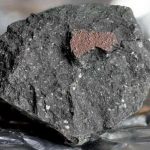China’s first Mars rover has landed and is sending its first pictures0
- From Around the Web, Space
- May 20, 2021
The rover marks China’s first landing on the Red Planet

The rover marks China’s first landing on the Red Planet

The birth of a star is a wild and magnificent thing.

This week, two asteroids that could be as large as football fields will fly safely past the Earth.

Launched in September 1977, NASA’s Voyager 1 spacecraft flew by Jupiter in 1979 and then Saturn in late 1980. In August 2012, it crossed the heliopause and became the first in situ probe of the very local interstellar medium. Now, using data from the Plasma Wave System on Voyager 1, a team of researchers from Cornell University and the University of Iowa has detected very weak plasma wave emission in the interstellar medium.

Most of the galaxy’s disk was in place before a major collision 10 billion years ago

Scientists have spotted water in a primitive meteorite, expanding our understanding of the ancient solar system.

If asked where meteorites come from, you might reply “from comets.” But according to our new research, which tracked hundreds of fireballs on their journey through the Australian skies, you would be wrong.

State-run media says landing ‘spectacularly conquered’ a new milestone; it joins US Perseverance rover which landed in February

If you’re a fan of titanium, you should head to the nearest supernova. You’ll get more than enough of it. And its presence can help astronomers understand how supernovae work.

A smattering of plutonium atoms embedded in Earth’s crust are helping to resolve the origins of nature’s heaviest elements.



